Bulletin #2613, Tips for Growing Houseplants in Maine: Controlling Insects and Disease in Houseplants
Tips for Growing Houseplants in Maine: Caring for Houseplants in Maine (PDF)
Tips for Growing Houseplants in Maine: This newly revised and expanded fact sheet series addresses the basics of keeping houseplants. It will help you diagnose common problems with your houseplants, such as insects and diseases; overwatering or underwatering; improper lighting, temperature, or humidity; and insufficient pot size (root-bound). The series addresses how to start new plants from old plants, and also the unique challenges of growing houseplants in Maine, including the use of artificial light.
Adapted by Donna Coffin, Extension Professor, University of Maine Cooperative Extension
Reviewed by Rebecca Long, Extension Professional, Matt Wallhead, Extension Ornamental Horticulture Specialist, and Alicyn Smart, Extension Plant Pathologist, University of Maine Cooperative Extension
For information about UMaine Extension programs and resources, visit extension.umaine.edu.
Find more of our publications and books at extension.umaine.edu/publications/.
Houseplants can become infested with several kinds of insects and mites that thrive in the favorable temperature and growing conditions of the average home. High temperatures and a large group of plants are particularly favorable to most insects.
Prevention of Insect and Disease Infestations
- Healthy plants will be less susceptible to infestation. See Bulletin #2611, Caring for Houseplants in Maine.
- Examine plants, including the underside of leaves, for disease, insects, eggs, webbing, or feeding damage before purchasing. It’s a good idea to isolate new plants for a month; control infestations if necessary.
- Regularly inspect your plants as you water. Controlling a few insects is much easier than controlling a large infestation.
- Once every three to four months, wash all your plants with warm soapy water and a soft cloth to remove any built up dust. Hairy textured leaves like African violets can be brushed with a soft brush to remove dust. A regular bath may be all that is needed to remove many insects. Use two teaspoons of a mild liquid dishwashing detergent to one gallon of water. Keep the soap mixture out of the soil.
- Use sterilized soil for potting to prevent development of soil insects.
Insecticides
Before spraying a plant with an insecticide, make sure you know what the insect is (Table 1) (University of Maine Cooperative Extension Insect Lab) and follow the label directions very carefully. Consider removing the infected leaves or discarding infested plants rather than treating them with a toxic substance.
Move the plants to be sprayed into a well-ventilated area, such as the garage, basement, or a room with a fan. If the weather allows, treat plants outdoors and away from direct sunlight. Bring plants back in when dry.
Note: Check all pesticide labels carefully. Products may not be registered for use on all varieties of plants or may not be tested on all rare or unusual varieties. If the host and pest are not listed on the label, do not use the pesticide. Systemic pesticides, such as imidacloprid (BioAdvanced 2 in 1 Plant Food and Insect Control Spikes or Bonide Systemic Houseplant Insect Control), work by being absorbed into the plant, via the roots, and are ingested by pests when they feed on the plant. Systemics should not be used in combination with beneficial insects.
| Pest | Photo | Description | Damage | Control |
|---|---|---|---|---|
| Aphids | 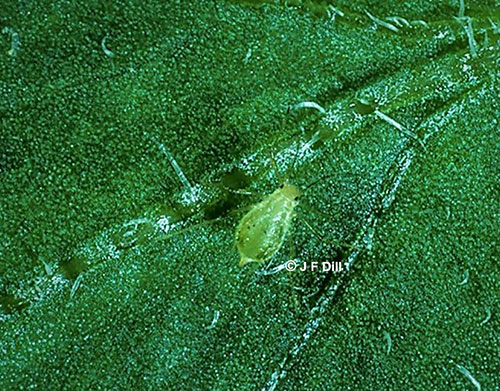 J. Dill J. Dill | Tiny green, brown, or black insect, located on the undersides of leaves | Feeding damage causes stunted plant growth and curled or distorted foliage | Wash off with water, insecticidal soap,or neem, or use imidacloprid |
| Fungus Gnat | 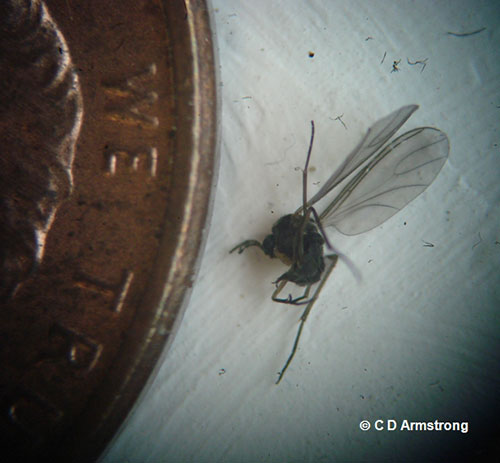 C. D. Armstrong C. D. Armstrong | Adult is a small fruit fly–type insect. Larvae is a small white worm or maggot that lives in the moist soil | Minimal damage | Allow the soil surface to dry between waterings or use Bacillus thuringiensis subsp. israelensis |
| Mealybugs | 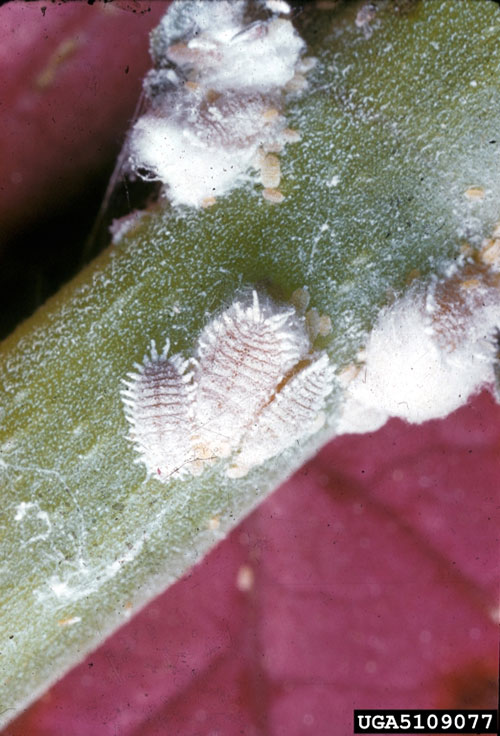 US National Collection of Scale Insects Photographs, USDA ARS, Bugwood.org US National Collection of Scale Insects Photographs, USDA ARS, Bugwood.org | Scale insect with white cottony appearance on stems, undersides of foliage, and on nodes (where the leaf or bud attaches to the plant’s stems) | Feeding damage causes stunted plant growth | Wipe off with cotton swab dipped in alcohol, or use insecticidal soap, or neem,or use imidacloprid |
| Mites: Spider | 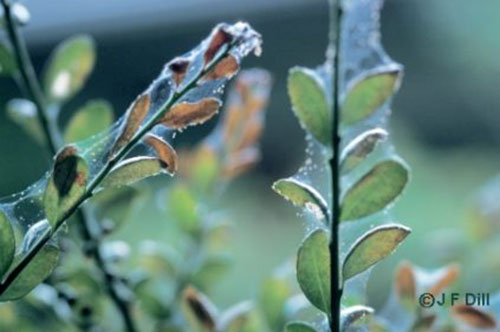 J. Dill J. Dill | Microscopic light-colored arachnids (not insects) | Produce webbing on foliage and stems | Discard heavily infested plants; or horticultural oil (can cause damage) |
| Mites: Cyclamen | 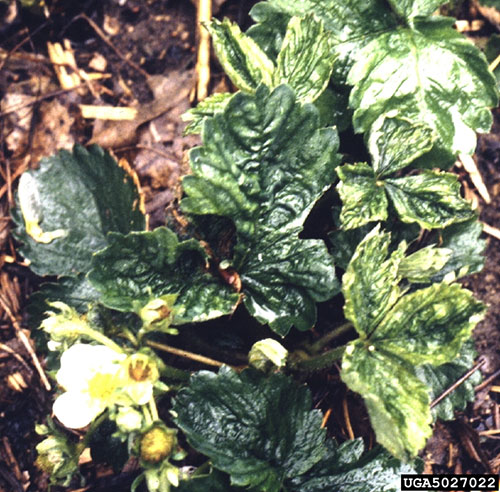 Jody Fetzer, Maryland National Capital Park and Planning Commission, Bugwood.org Jody Fetzer, Maryland National Capital Park and Planning Commission, Bugwood.org | Microscopic arachnids not visible without magnification | Feeding produces distorted yellowish foliage | Discard heavily infested plants or use insecticidal soap[1] |
| Scale |  Whitney Cranshaw, Colorado State University, Bugwood.org Whitney Cranshaw, Colorado State University, Bugwood.org | Oval or round brown insects located on stems and leaves | Insects suck plant juices, resulting in poor or stunted plant growth. Black fungus may grow on honeydew (sap) excreted. | Discard heavily infested plants; wash off with water, wipe off with cotton swab dipped in alcohol, or use insecticidal soap, neem oil, or horticultural oil (can cause damage)[2] |
| Springtails | 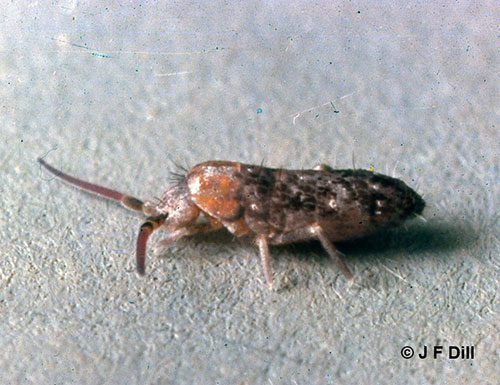 J. Dill J. Dill | Minute in size (1/8th to 1/16th of an inch in length), dark-colored but some can be white or light in color. Live in moist soils. | They are beneficial insects because they feed on fungi, pollen, algae, and decaying organic matter. | |
| Thrips | 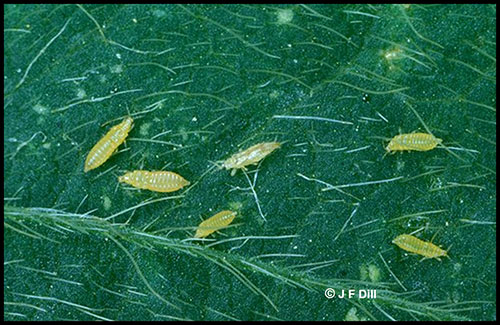 J. Dill J. Dill | Extremely tiny (1/8th to 1/4 inch) insects. Adults are light tan to dark brown; appear white when young | Feed on foliage and flowers, causing them to have a silvery appearance and become distorted and discolored | Use neem, horticultural oil, spinosad,or pyrethrins |
| Whitefly | 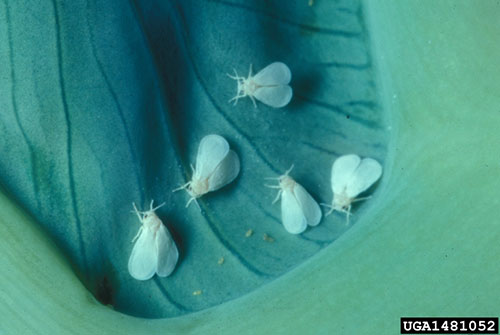 Frank Peairs, Colorado State University, Bugwood.org Frank Peairs, Colorado State University, Bugwood.org | Small, white, gnat-like insect | Adults and young feed on leaves, causing the leaves to turn pale yellow or white | Wash or use alcohol swab; insecticidal soap, or neem, or use imidacloprid |
[1] Bessin, R. 2019. Cyclamen Mite in the Greenhouse. University of Kentucky College of Agriculture https://entomology.ca.uky.edu/ef422
[2] Klass, C. 2012. Scale on Houseplants. Cornell University http://idl.entomology.cornell.edu/wp-content/uploads/Scales-on-Houseplants.pdf
| Active Ingredient | Trade Name(s) |
|---|---|
| Bacillus thuringiensis subsp. israelensis | Gnatrol, Knox-Out Gnats |
| Neem oil (Clarified hydrophobic extract of neem oil) | NimBioSys Neem Oil, Bonide Captain Jack’sNeem Oil |
| Insecticidal soap (potassium salts of fatty acids) | Bonide Insecticidal Soap Multi-Purpose Insect Control, Garden’s Alive! Plant Guardian Houseplant Insecticidal Soap, or Safers Insect Killing Soap |
| Imidacloprid | BioAdvanced Fertilizer with Imidacloprid plant spikes, Bonide Systemic Houseplant Insect Control |
| Horticultural oil (mineral oil) | Bonide All Seasons Horticulture and Dormant Oil, Safer Brand Horticulture and Dormant Oil Spray |
| Spinosad | Bonide Spinosad Concentrate (AKA Captain Jacks Deadbug Brew), Gardens Alive! Bulls-Eye Bioinsecticide, Monterey Garden Insect Spray |
| Pyrethrins | Bonide Pyrethrin Garden Insect Spray, Gardens Alive! House Guardian Insect Spray, Safer Brand End All Insect Killer |
| Abiotic (environment)[1] | ||
|---|---|---|
| Symptom | Photo | Common Cause |
| Spindly plants / leggy growth/ weak growth | 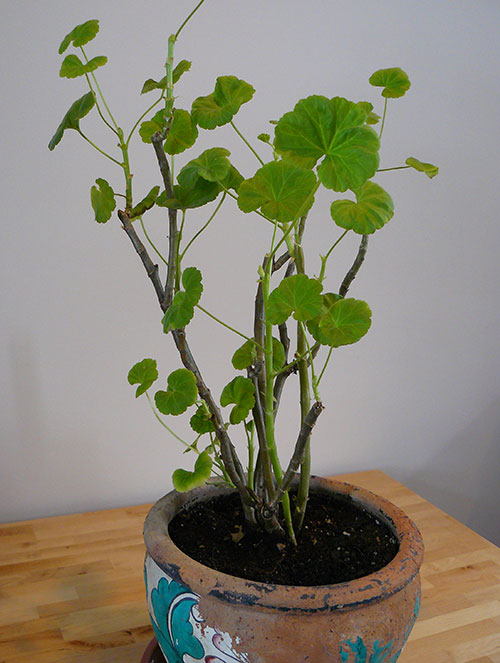 Julie Weisennhorn, UMN Extension Julie Weisennhorn, UMN Extension |
|
| Few flowers | 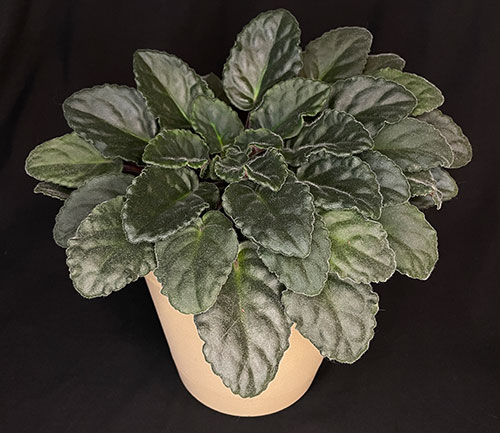 R. Long R. Long |
|
| Yellowing leaves |  R. Long R. Long |
|
| Leaves sun-scorched/ sunscalded | 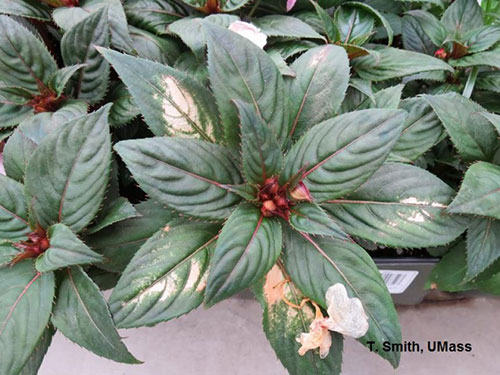 Tina Smith – Tina Smith –UMass Extension, Retired 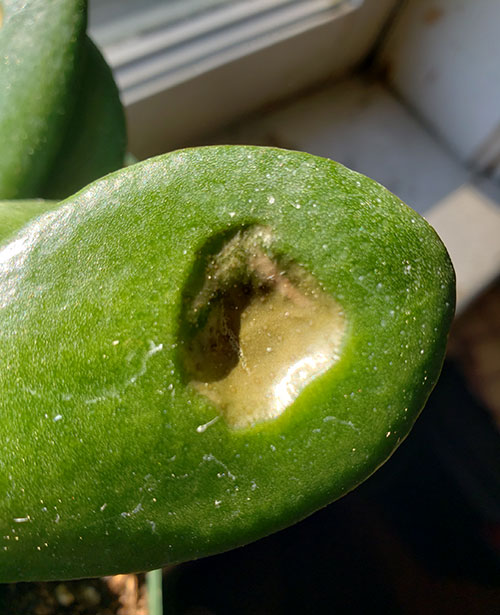 D. Coffin D. Coffin |
|
| Brown leaf tips | 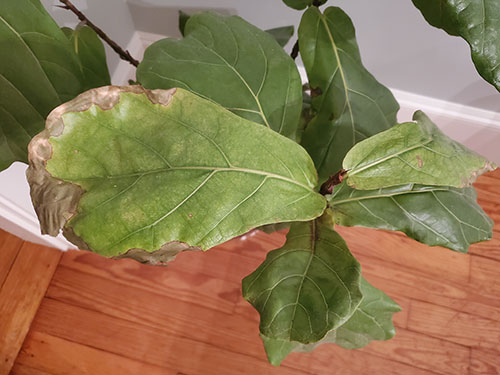 A Smart A Smart
 R. Long |
|
| Small leaves | 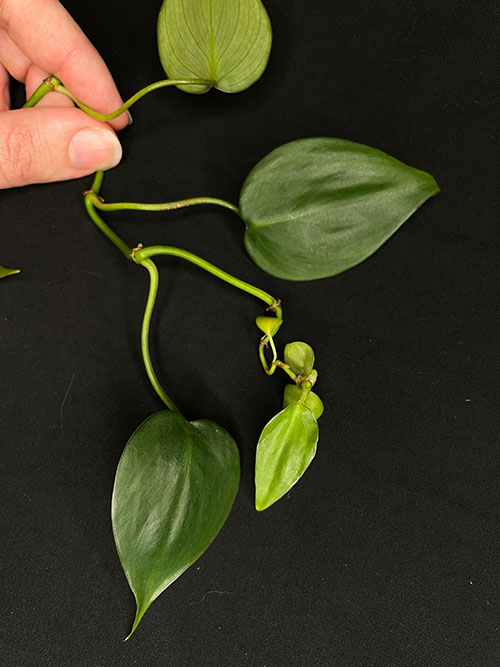 R. Long R. Long |
|
| Wilting plant | 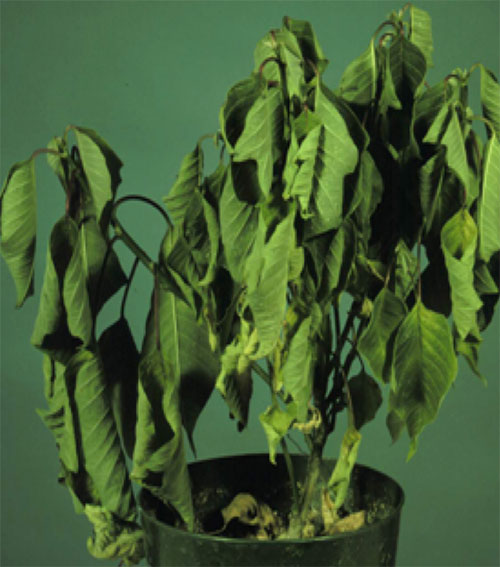 Photo courtesy of University of Wisconsin-Madison Photo courtesy of University of Wisconsin-Madison |
|
| Biotic (disease organism)[2] | ||||
|---|---|---|---|---|
| Name | Photo | Organism | Symptom | Management |
| Anthracnose | 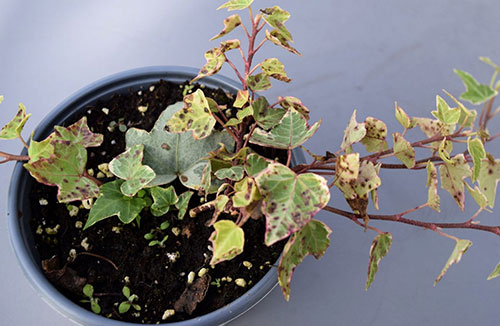 Photo courtesy Margery Daughtrey, Cornell University Photo courtesy Margery Daughtrey, Cornell University | Colletotrichum and Gloeosporium fungi | Leaf tips turn yellow, then brown; entire leaf may die | Remove infected leaves and avoid misting leaves |
| Leaf spots |  R. Long R. Long | Fungi and bacteria | Fungal: Leaf spots appear brown and may have a yellow halo; tiny black dots (fungal bodies) can be seen with a magnifying lens on the brown tissue; portions of or the entire leaf may die
Bacterial: Leaf spots appear water-soaked and may also have a yellow halo | Remove infected leaves; increase air circulation; avoid getting water on leaves |
| Powdery mildew | 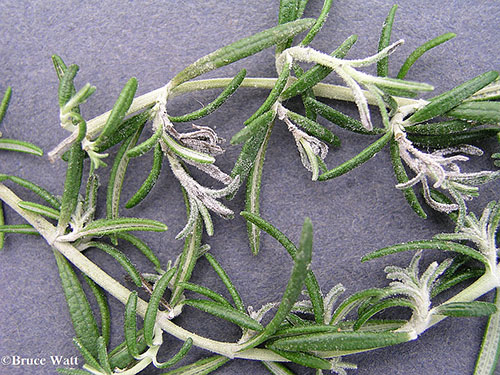 B. Watt B. Watt | Fungus Oidium genus | White powdery fungal growth on foliage; leaf distortion; leaf drop may result | Increase air circulation around plant; avoid saturated soils; remove severely infected foliage |
| Root and stem rots | 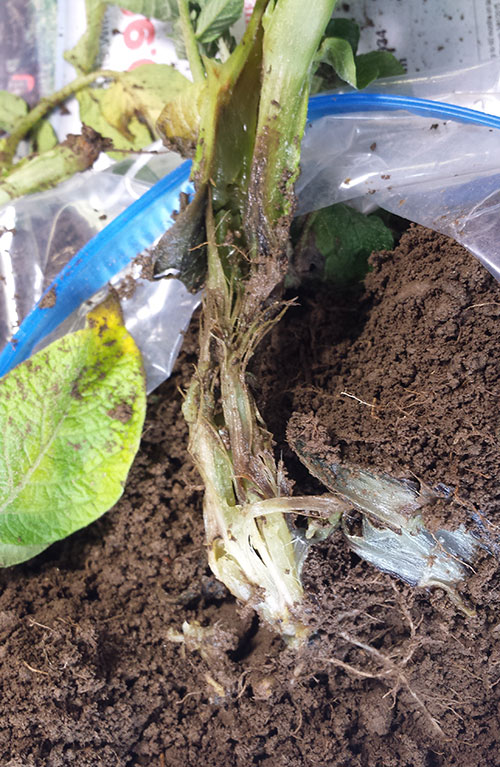 D. Coffin D. Coffin | Botrytis species (sp.), Pythium sp., Alternaria sp., Phytophthora sp., Sclerotinia sp., and Rhizoctonia sp. | Brown to black soft or mushy roots or lack of roots; girdled soft stems with a brown or black lesion near the soil line; plants wilt, show nutrient deficiency symptoms, and may eventually die | Cut back on watering; dispose of infected plants and sterilize any pot that will be reused |
[1] Kelly, K. 2016. Preventing, Diagnosing, and Correcting Houseplant Problems, Penn State University, https://extension.psu.edu/preventing-diagnosing-and-correcting-common-houseplant-problems
[2] Kelly, K., Preventing, Diagnosing, and Correcting Houseplant Problems, Penn State University, https://extension.psu.edu/preventing-diagnosing-and-correcting-common-houseplant-problems
Additional Resources
- Bulletin #2611, Caring for Houseplants in Maine
- Bulletin #2612, Dealing with Houseplant Problems in Maine
- Bulletin #2614, Growing Houseplants Under Artificial Lights in Maine
- Bulletin #2615, Creating New Plants from Old Plants
- Bulletin #2516, FAQ About Houseplants in Maine
Sources
Houseplants in Maine by Lois Stack, Ornamental Horticulture Specialist, University of Maine Cooperative Extension
House Plant Tips by Gleason Gray, Extension Educator, Penobscot County, University of Maine Cooperative Extension
Information in this publication is provided purely for educational purposes. No responsibility is assumed for any problems associated with the use of products or services mentioned. No endorsement of products or companies is intended, nor is criticism of unnamed products or companies implied.
© 2021
Call 800.287.0274 (in Maine), or 207.581.3188, for information on publications and program offerings from University of Maine Cooperative Extension, or visit extension.umaine.edu.
In complying with the letter and spirit of applicable laws and pursuing its own goals of diversity, the University of Maine System does not discriminate on the grounds of race, color, religion, sex, sexual orientation, transgender status, gender, gender identity or expression, ethnicity, national origin, citizenship status, familial status, ancestry, age, disability physical or mental, genetic information, or veterans or military status in employment, education, and all other programs and activities. The University provides reasonable accommodations to qualified individuals with disabilities upon request. The following person has been designated to handle inquiries regarding non-discrimination policies: Director of Equal Opportunity and Title IX Services, 5713 Chadbourne Hall, Room 412, University of Maine, Orono, ME 04469-5713, 207.581.1226, TTY 711 (Maine Relay System).

